12Common laburnum
Laburnum anagyroides

A short distance to the right is tree number twelve, a common laburnum, also called common golden chain or rain, gold rush, yellow shrub or bean tree, botanical name Laburnum anagyroides, of the papilionaceous or Fabaceae family.
The reason for the name "golden rain" becomes abundantly clear during the flowering period between April and June. The bright yellow flower clusters, arching over from the branches and up to thirty centimeters long, are so abundant that they almost seem to be raining gold from the sky. The common laburnum is therefore a popular ornamental shrub that has been an eye-catcher in many gardens since at least the 16th century. The name bean tree refers to the bean-shaped fruits.
Laburnum grows as a deciduous shrub or small tree to heights of just over two meters and a little over a meter wide. The bark is gray-brown on several trunks and overhanging branches and remains smooth, greenish on young twigs; it is brown-green on older ones. The leaves alternate. Three ovate leaflets grow on long, densely hairy petioles, dark green on top and lighter on the underside, hairy and about three to eight centimeters long.
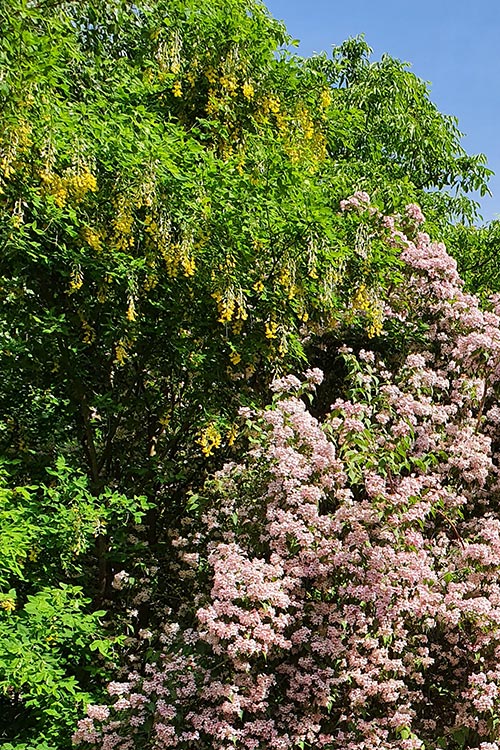
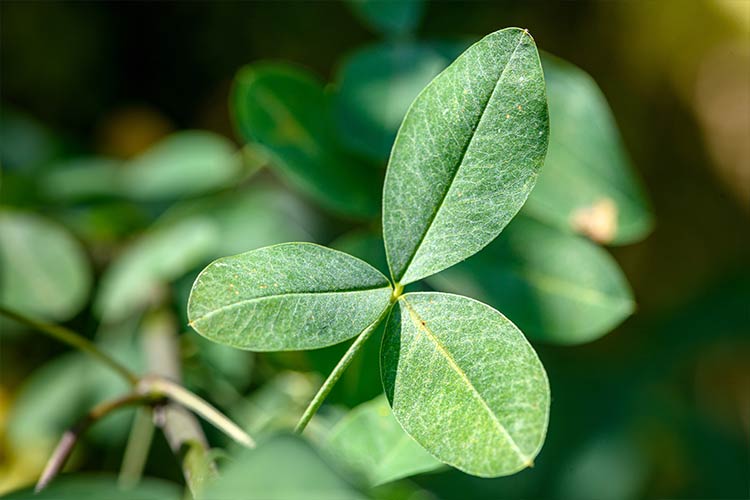
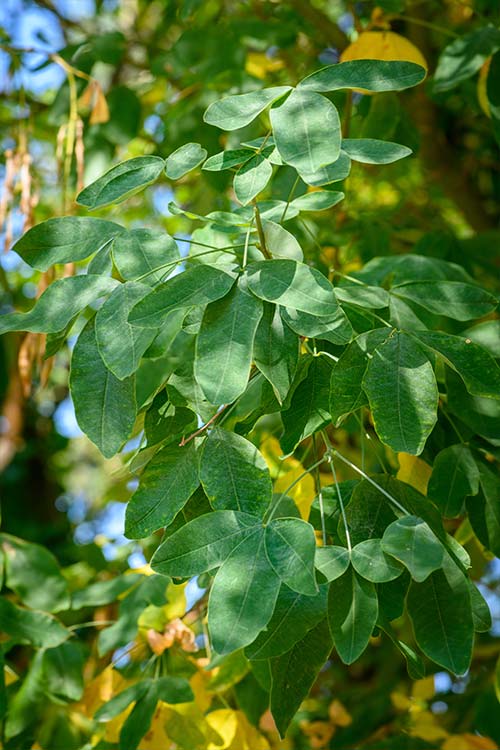
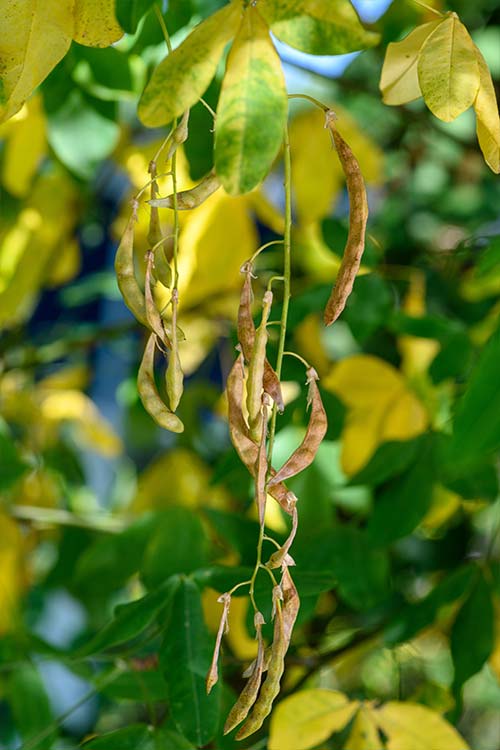
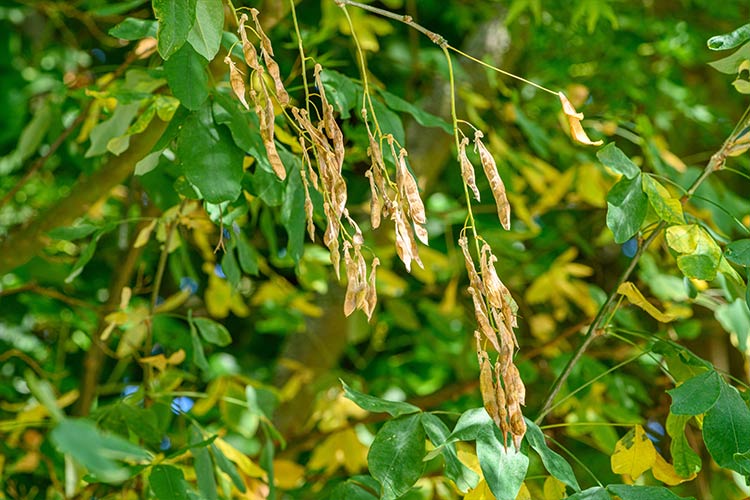
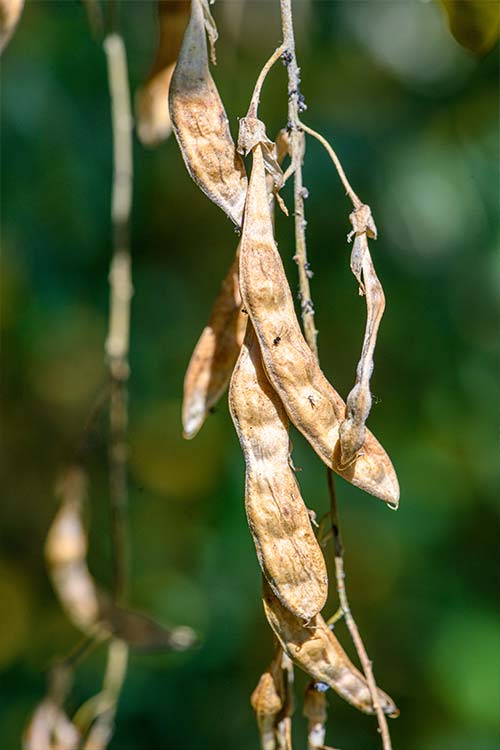
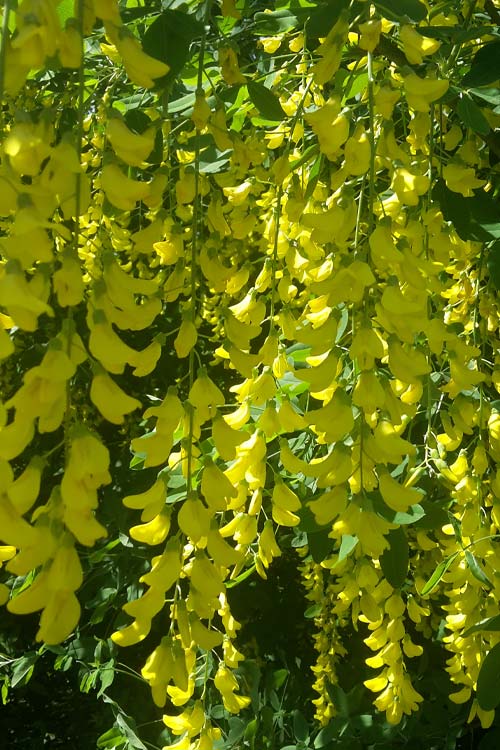
As a legume, laburnum has nodule bacteria in its roots that bind atmospheric nitrogen. It is considered undemanding, thriving in dry to fresh, loamy and calcareous soils, but also adapting to other conditions. It prefers sunny to shady locations and tolerates temperatures down to minus 26 degrees Celsius.
Its original distribution was Southern Europe, North Africa and Western Asia.
All parts of the plant, especially the seeds, contain toxic alkaloids. These include cytisine, laburnine, and laburnamine. As few as three to four immature legumes, fifteen to twenty seeds, or ten flowers are considered lethal doses for humans. Because cytisine acts on nicotinergic acetylcholine receptors, poisoning symptoms initially resemble those of nicotine. Central excitation is soon followed by central nervous system depression. Sweating, increased salivation, nausea, stomach pain, and violent vomiting occur. Vomiting may prevent a fatal outcome. Without it, severe convulsions progress to paralysis. If this affects the respiratory muscles, death may result.
The cytisine content of the plant decreases to almost zero during the growing season. Late harvested leaves were therefore formerly used dried as an expectorant and laxative. Because of the nicotine-like effect, they were sometimes even used as a tobacco substitute. The seeds were formerly used as a stimulant of the central nervous system, to stop smoking, or as treatments for whooping cough or asthma, and used as an emetic, as well as for constipation and drainage.